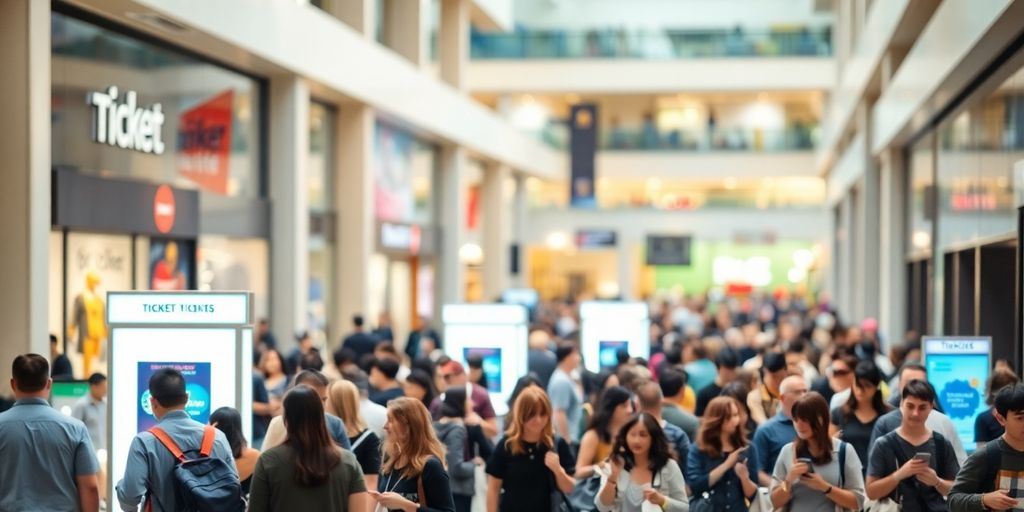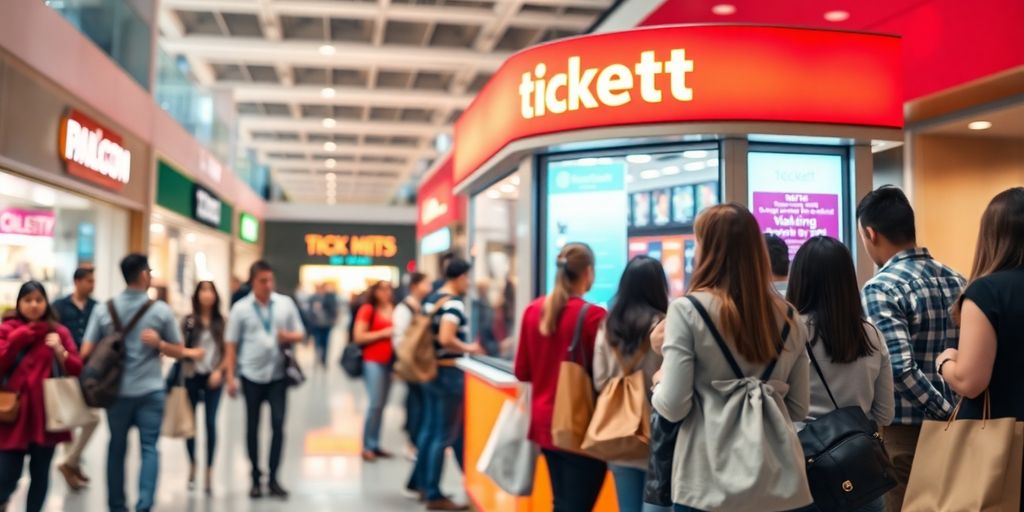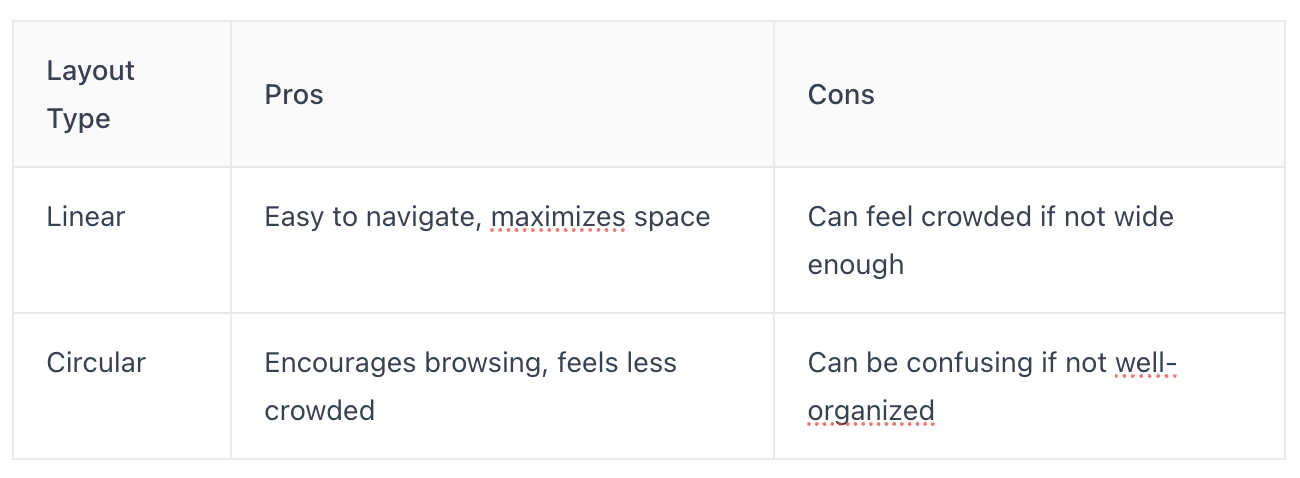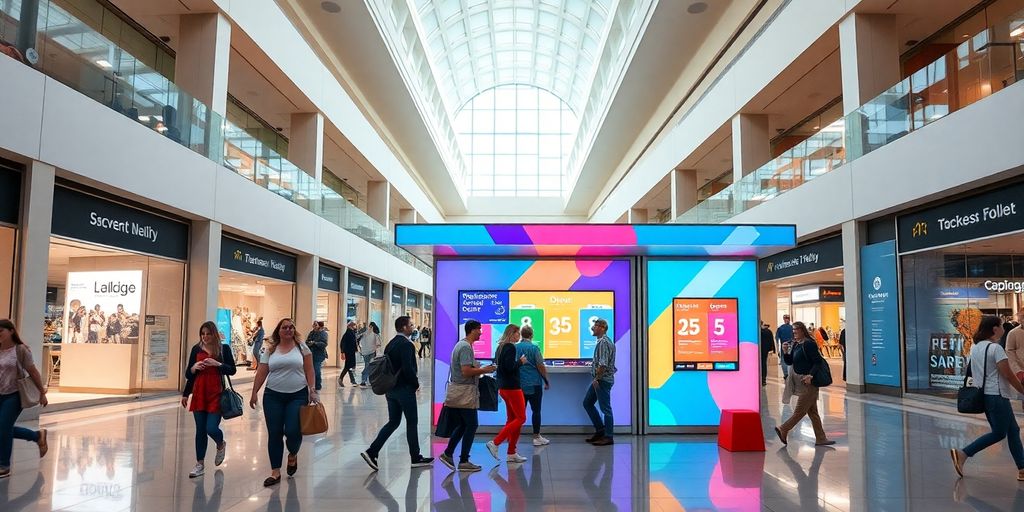Register as an organizer
Click the button below and finish your organizer registration, or fill out the form and we will be in touch to assist you.

Thinking about selling tickets? Forget the old ways. Imagine setting up shop right where people are already walking around, like in busy malls or train stations. This idea, called pop-up ticket sales at high-traffic locations, is changing how we buy tickets. It's all about bringing the sales to the people, making it easy and quick for them to grab a ticket while they're out and about. We'll look at how this works and why it's becoming a big deal.
Urban nodes and public spaces are prime real estate for pop-up ticket sales. Think about it: these are places where people naturally congregate. Parks, plazas, and even busy street corners can become temporary hubs for selling tickets to events. The key is understanding the flow of people and identifying the spots where you can intercept potential customers without being intrusive. It's about finding that sweet spot where visibility meets convenience.
Transit hubs, like train stations and bus terminals, are goldmines for pop-up ticket sales. People are often waiting, looking for something to do, or simply passing through. This captive audience is perfect for impulse purchases. Imagine setting up a booth near the ticket machines or the waiting area. You're not just selling tickets; you're offering a convenient solution to their entertainment needs. Plus, transit hubs often have a diverse demographic, increasing your chances of reaching a wider audience. You can even offer fare options at these locations.
To really make the most of high-traffic locations, you need a strategy. It's not enough to just set up a table and hope for the best. Here's what I would do:
Think about the customer experience. Is your booth easy to find? Is it inviting? Are your staff friendly and knowledgeable? Small details can make a big difference in converting foot traffic into actual sales.
Ultimately, it's about creating a seamless and enjoyable experience for potential ticket buyers.

Commercial hubs are evolving. They're not just places to buy things anymore. Think about it: people are looking for experiences. Pop-up ticket sales can be a part of that, turning a simple transaction into something memorable.
It's about more than just selling tickets; it's about creating a buzz and making people feel like they're already part of the event.
It's a tricky balance. You want to sell tickets, but you also don't want to turn a public space into just another shopping mall. The goal is to add value, not just extract it. Consider the evolving shopping centers and how they are becoming more than just retail locations.
Curation is key. It's not just about slapping up a table and selling tickets. It's about carefully selecting the events you promote and how you present them. Think of it as creating a mini-experience that reflects the event itself. The selection of events matters.

Carefully curated pop-up ticket sales can transform a commercial hub into a dynamic and engaging space.
Setting up shop in busy areas isn't a walk in the park. You've got to deal with permits, zoning laws, and a whole bunch of red tape that can really slow things down. It's like trying to assemble IKEA furniture without the instructions – frustrating! Plus, you're competing for space with everyone else, from food vendors to street performers. Finding the perfect spot that's both visible and accessible can feel like searching for a needle in a haystack.
Pop-up spaces often come with design constraints. You might be stuck with a tiny footprint, limited power outlets, or weird lighting. It's a real test of creativity to make a small space feel inviting and functional. Think about how you can use vertical space, modular displays, and clever lighting to maximize impact. It's all about making the most of what you've got.
But hey, it's not all doom and gloom! Pop-up ticketing also presents some awesome opportunities. You can reach customers who might not normally go out of their way to buy tickets online. Think about targeting specific events or demographics with tailored promotions. Maybe offer a "Barbie & Bubbles" flight for a summer blockbuster, or a "Formula One Flight" with wines from global regions on the circuit. The key is to get creative and think outside the box.
Pop-up ticketing is a chance to connect with people in a more personal way. It's about creating an experience, not just making a sale. By understanding the challenges and embracing the opportunities, you can turn a temporary space into a powerful sales tool.
Okay, so you want to set up a pop-up ticket booth. Cool. But think about where you're putting it. You can't just plop it down anywhere and expect people to flock to it. It needs to feel like it belongs. Think about the existing architecture, the flow of people, and the overall vibe of the place.
The goal is to make people feel comfortable approaching your booth. It shouldn't feel intimidating or confusing. Think about the layout, the lighting, and the staff. Are they friendly and approachable? Is the pricing clear? Is there enough space for people to browse without feeling crowded?
How people move through your booth is super important. You want to guide them from the entrance to the point of sale without any bottlenecks. Think about how people naturally move and design the layout accordingly. A well-designed layout can increase sales and improve the overall customer experience. Think about organizing a pop-up store to maximize efficiency.
I saw this one booth once that had a really clever setup. They had the most popular tickets displayed right at the front, so people could see them immediately. Then, they had a little display of upcoming events further inside, so people would browse while they waited in line. It was simple, but it worked really well.
Here's a simple example of how layout can impact sales:

Public spaces are changing. They're not just parks and plazas anymore. Think about it: transit hubs, once just places to pass through, are becoming destinations. This shift opens up huge possibilities for pop-up ticket sales. It's all about understanding how these spaces are evolving and adapting to the new ways people use them. The Minneapolis Skyway system and the Houston Tunnel System are examples of transit ways, not urban spaces.
Consumers today want experiences, not just products. They're looking for convenience, engagement, and something unique. Pop-up shops gained popularity in the early 2000s as brands utilized vacant urban spaces for temporary retail experiences. Pop-up ticketing needs to tap into this desire. It's about creating a memorable interaction that goes beyond simply buying a ticket. Think interactive displays, exclusive offers, or even mini-events that draw people in. It's about making the ticket-buying process part of the overall experience.
What does the future hold? I think we'll see even more integration of pop-up sales into the fabric of public spaces. Imagine interactive kiosks that offer personalized recommendations, or mobile ticketing agents who can meet customers where they are. The key is to be flexible, adaptable, and always looking for new ways to connect with potential customers. It's about turning high-traffic locations into high-conversion opportunities. Grand Central Terminal is a great example of a curated space.
The future of pop-up ticket sales lies in creating seamless, engaging experiences that cater to the evolving needs and expectations of consumers in dynamic public spaces. It's about being where the people are and offering them something they can't resist.
Getting property management on board is key for smooth pop-up operations. It's not just about securing a spot; it's about building a relationship. Think of it as a two-way street. What can your pop-up bring to their property? Increased foot traffic? A more vibrant atmosphere? Highlighting these benefits can make all the difference. You'll want to discuss logistics like setup/teardown times, waste disposal, and security. Clear communication from the start prevents headaches later.
Pop-ups don't exist in a vacuum. Tapping into the local business ecosystem can amplify your reach. Consider cross-promotions with nearby cafes or shops. Maybe offer a discount at your pop-up for customers who show a receipt from a local restaurant. Partnering with community organizations can also add a layer of authenticity and goodwill. Think about sponsoring a local event or donating a portion of your proceeds to a local charity. This not only helps the community but also boosts your brand image. You can also look into partner programs to expand your reach.
Pop-up ticket sales can be more than just a transaction; they can be a way to build community. Think about hosting small events or workshops at your pop-up location. Maybe a pre-show talk with artists or a behind-the-scenes look at an upcoming performance. These initiatives create a buzz and turn your pop-up into a destination. It's about creating an experience that goes beyond just buying a ticket. This can lead to increased customer loyalty and word-of-mouth marketing. Consider these ideas:
By actively engaging with the community, pop-up ticket sales can transform from a simple sales point into a hub for connection and shared experiences. This approach not only drives ticket sales but also fosters a sense of belonging and excitement around the events being promoted.

When it comes to pop-up ticket sales, you can't just set up shop and hope for the best. You need to know if your efforts are actually paying off. That's where Key Performance Indicators (KPIs) come in. These metrics help you gauge the effectiveness of your pop-up locations. Here are a few important ones to keep an eye on:
Tracking these KPIs will give you a clear picture of what's working and what's not. Don't be afraid to adjust your strategy based on the data. For example, if you notice that one location has a low conversion rate, you might need to rethink your signage or staffing.
It's not enough to just track sales numbers. You also need to understand how customers are interacting with your pop-up ticket sales setup. Are they stopping to look at your displays? Are they asking questions? Are they engaging with your staff? This kind of qualitative data can be just as valuable as quantitative data. Here's how to dig deeper:
Once you've gathered enough data, it's time to put it to use. The goal is to continuously improve your pop-up ticket sales strategy based on what you've learned. This might involve making changes to your location, your marketing, or your sales approach. Think of it as an ongoing experiment. Here are some steps to take:

Remember, the key to success is to be flexible and adaptable. The urban landscape is constantly evolving, and your pop-up ticket sales strategy needs to evolve with it. By continuously measuring your results and refining your approach, you can track sales and maximize your revenue.
So, what's the takeaway here? It's pretty clear that setting up ticket sales in places like malls and train stations has a lot going for it. You're right where people are, which just makes sense. It's not just about selling tickets, though. It's about making things easy for folks, giving them a chance to grab tickets when they're already out and about. This kind of setup can really help events and venues connect with more people, maybe even folks who wouldn't normally go looking for tickets online. It's a simple idea, but sometimes those are the best ones. Getting tickets where people already walk can make a big difference for everyone involved.
Pop-up ticketing means selling tickets in temporary spots, like inside a busy mall or a train station. It's about reaching people where they already are, making it super easy for them to buy tickets without going out of their way.
These places are perfect because lots of people pass through them every day. Think of all the shoppers, commuters, and tourists. It's a goldmine for getting your event in front of a huge crowd without spending a ton on advertising.
It's not just about setting up a table. You want to make the space fun and interesting, maybe with cool displays or even a small performance. The goal is to grab people's attention and make them want to learn more about your event, not just rush past.
It can be tricky. You have to work with the building owners, deal with crowds, and make sure your setup fits in without getting in anyone's way. But if you do it right, the payoff can be huge, reaching new customers you might never have found otherwise.
We look at things like how many tickets we sell, how many people stop by our booth, and if those people end up buying tickets. We also listen to what customers say to make our next pop-up even better.
It's super important! Working with the mall or station managers helps you get a good spot and follow all their rules. Teaming up with local shops or groups can also help spread the word and make your pop-up feel like part of the community.
More blogs
Click the button below and finish your organizer registration, or fill out the form and we will be in touch to assist you.